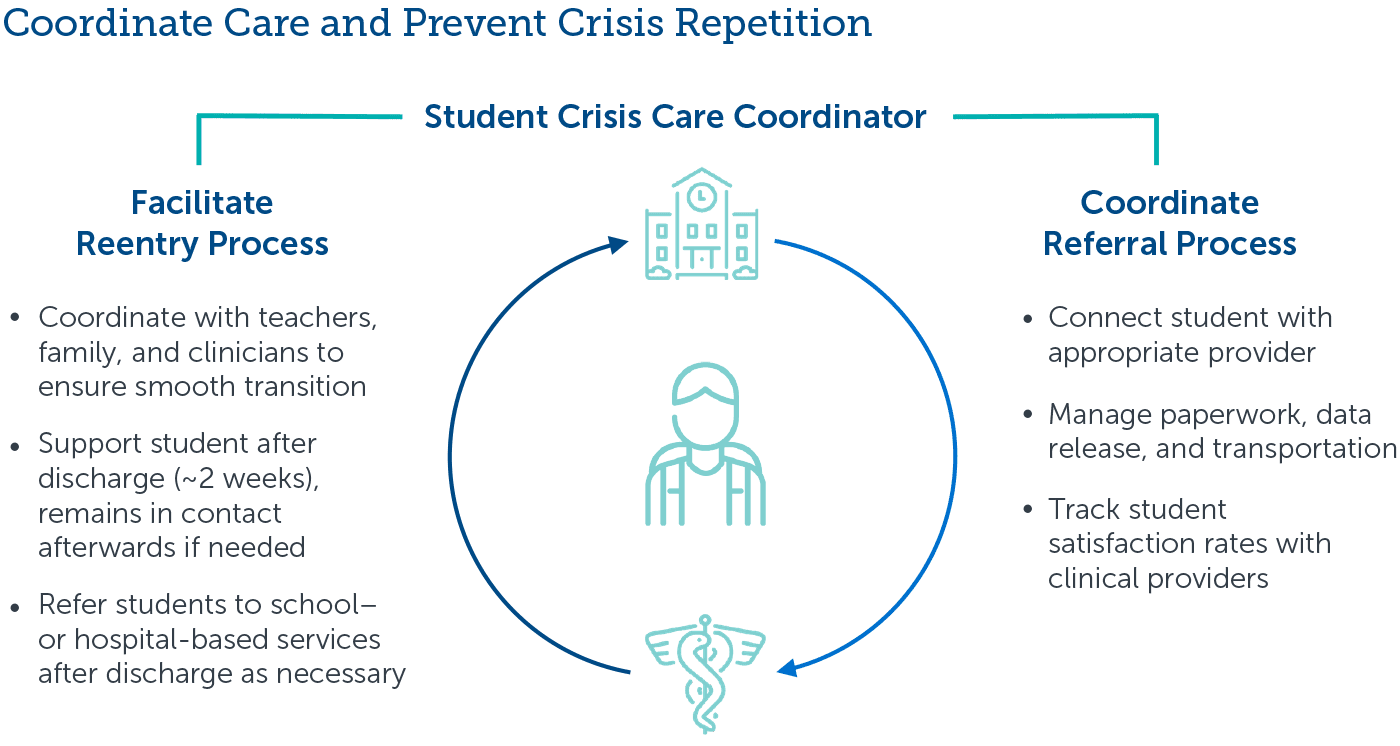Meet the Unprecedented Demand for Mental Health Care in Schools
This year, schools are expecting to see a surge in the number of students and staff requiring additional support for their mental health. The pandemic, extended quarantine, economic downturn, and ongoing civil unrest have increased rates of anxiety and depression across every demographic, compounding a nation-wide mental health crisis that plagued schools and communities long before the coronavirus arrived. With a chronic shortage of community providers across the country, responding to this crisis will fall largely to schools and districts. This guide presents a roadmap to improve outcomes for students while minimizing strain on district resources and budgets.

Proactively identify students in need of support
The first imperative is to understand which students need help. Schools typically rely on teacher referrals to route students to supports, but this carries two glaring weaknesses: students not displaying external signs of distress will likely go unnoticed, and many students lack a trusted relationship with an adult in their building who they would feel comfortable contacting when struggling with social, emotional, and psychological concerns.

A three-pronged strategy can maximize early identification of students needing support
-
Universal screening for social, emotional, and behavioral concerns
The National Association of School Psychologists cites universal screening tools as the key step in building a proactive system of mental health support in schools. Screening enables schools to identify students not yet showing external symptoms of psychological or emotional distress.
-
Systematic adult-student relationship mapping
Asking staff to answer five simple yes/no questions about each student will quickly highlight which students currently lack a trusted relationship with an adult in their building. Deliberate follow-up steps can ensure that every student feels seen, heard, and connected to an adult they trust.
-
First responder Handle with Care (HWC) notifications
Districts need to know when students experience potentially traumatic events beyond school walls. HWC provides FERPA-compliant alerts that let schools know when a student could benefit from closer monitoring and empathetic response to unusual behaviors.
Scale access to evidence-based interventions and clinical care
Nearly fifty percent of children with a diagnosable mental disorder don’t receive treatment from a mental health professional. Districts can take concrete steps to ensure that students needing additional support receive appropriate care through improving access to evidence-based interventions and mental health professionals within school walls (or while students learn from home).
By embracing group therapeutics and virtual mental health care, schools can provide a far greater number of students with access to the supports they need, while reducing strain on counselors and future costs for the district. Learn more about these two practices below.

Provide increased access to mental health care
-
Group Cognitive Behavioral Therapy (CBT)
Tier II interventions for mental health are often absent from districts’ tiered systems of support. This is largely because counselors believe them to be inferior to individual therapies. But research shows that group CBT is highly effective in reducing symptoms of anxiety and depression for many students. Embracing evidence-based group therapy can improve student outcomes, enable more students to be ready to learn, and alleviate capacity concerns for district staff.
-
Virtual access to mental health care
The coronavirus pandemic has initiated a mass migration to tele-health across the nation. But “tele-mental health care” is an innovation that should continue beyond the current period of social distancing. Partnering with a clinical provider to connect students with tele-mental health care benefits everyone involved: Students miss fewer classes, parents don’t need to leave work to transport their child, administrators know who is connecting with a therapist, and providers report being able to see more patients.
“Individual and group cognitive behavioral therapies (CBTs) have been shown to be highly effective for the treatment of anxiety in youth. Group cognitive behavioral therapy (GCBT) requires fewer resources than individual CBT because a single therapist can treat several children at once, thus making it less expensive for use in under-resourced settings…”
Eiraldi et al.
“Randomized Trial of Group CBT for Anxiety,” 2015
Support students in crisis from referral to resolution
The number of teens and pre-teens experiencing mental health crises simply can’t be ignored. Nationally, there are more than 3,000 suicide attempts made each day among students in grades 9 through 12. Students in crisis clearly need clinical support that is beyond the scope of district staff, but districts have historically taken a “refer and hope” approach when routing students to clinical care.
This referral process leads to a host of problems. Many students fail to connect with their referred clinical provider. Others fail to complete their course of care. And we hear time and time again that when students return to school, they struggle to catch up academically and reintegrate socially. The combination of incomplete treatment and an anxiety-ridden return frequently leads to a repeated crisis.


Reduce community-wide stigma around mental health
To truly turn the tide on rising rates of anxiety and suicide, students, staff, and caregivers must raise their hands when they need additional support. But persistent stigma around mental health commonly prevents individuals from voicing or even acknowledging their own challenges.
Research shows that effective stigma reduction requires ongoing awareness campaigns and a year-round focus on self-care that cannot be limited to annual markers such as Mental Health Month.
The three practices below have been proven to reduce community stigma around mental health and increase engagement in preventative programs.

Strategies to increase engagement in crisis prevention
-
Implement year-round awareness campaigns
Our webconference discusses how students at Oxford High School in Michigan started a project called, “13 Reasons Why Not,” publicly sharing their own experiences with suicidal ideation and what gave them the strength to live and overcome their problems.
-
Formalize peer-to-peer student education and mentoring
Student-led mental health clubs utilize student voice to create an ongoing mental health educational campaign and to provide peer-to-peer support across the school. Aided by educators, these clubs become an effective source of information and support for the entire student body.
-
Launch survey-driven wellness education series for families
Survey-driven programming is key to boosting parent engagement around mental health. It is critically important for districts to partner with caregivers on this topic, so families can recognize warning signs of severe mental illness and provide necessary at-home support for students.
This resource requires EAB partnership access to view.
Access the roadmap
Learn how you can get access to this resource as well as hands-on support from our experts through District Leadership Forum.
Learn More